Driving a car with an alternator not producing sufficient voltage can be dangerous.
If the alternator fails, the vehicle will no longer be able to maintain all electrical components leaving it without headlights, power steering, or other important functions. As a result, the vehicle may no longer have enough power to stay in motion and could stall at any time. Additionally, the car battery may not hold a charge and the vehicle could be left on the side of the road. In short, it is important to pay attention to any signs of failure.
what a real electrical technitian do before replacing an alternator
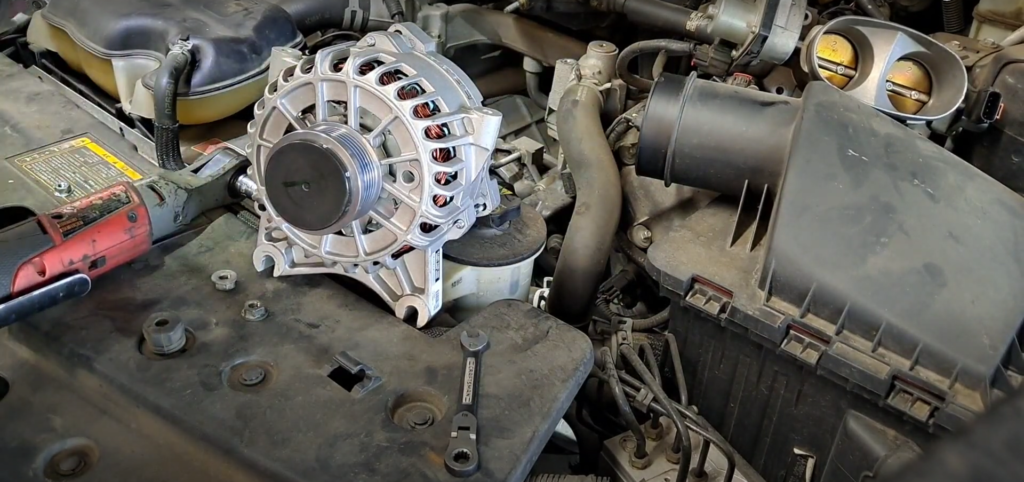
is to verify the alternator is actually responsible for electrical failure. This testing process ensures that you are replacing only the necessary parts, I have seen a lot people replace the alternator when in fact the problem is electrical connections by a faulty battery terminal or wiring problem or a pigtail at the alternator or computer problems.
here is one example:
a weird problem with the Toyota alternator
2002 Toyota Tacoma customer stated that the alternator needs to be replaced after the battery dies. They use jump cables but they put a negative battery cable on the positive battery post, after that the truck sure was the alternator not working right. There was a chance that there might have been a surge of electricity to the ECM due to the wrong connection of the jump cables.
Once a connect the scanner and check for code no code at the ECM but I noticed that the alternator fail at low RPM only but with Hight RPM the alternator is working, for some reason, the PCM keeps the throttle body closing, and this cause the alternator doesn’t work.
The fix was just to reprogram the throttle body back to the ECM specification.
alternator
An alternator is an electrical generator with a voltage regulator that converts mechanical energy into electric power for your vehicle. It works by rotating a series of magnets within windings to generate electricity through electromagnetic induction. This process generates a DC voltage primarily used to charge the car’s battery, which in turn provides the large current required to start the engine. While running, it takes over the task of supplying current to the vehicle’s electrical systems, ensuring they have enough energy to run without draining the battery.
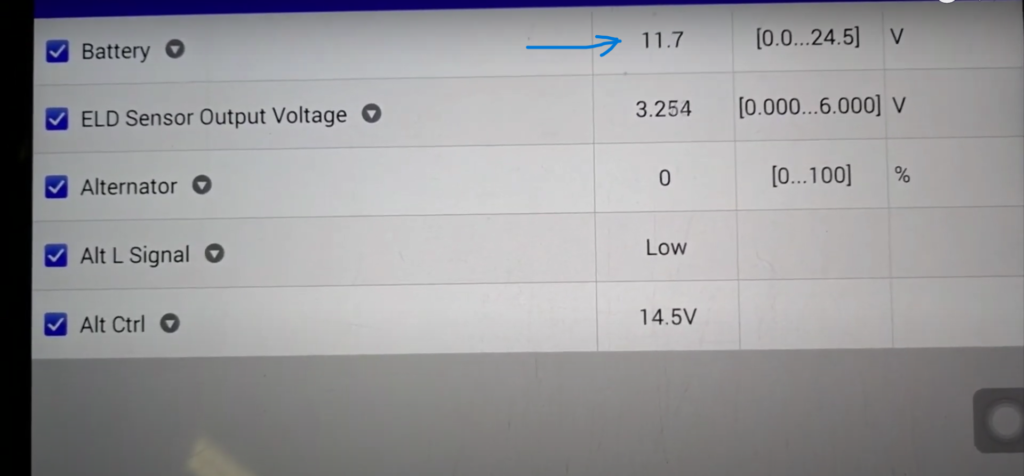

It is essential to be aware of a few signs that indicate your alternator may have an electrical issue. The presence of a burning electrical smell or a burning rubber smell could hint at voltage problems as the belt slips on the pulley. Being conscious of this is important because voltage drops can cause abnormal battery’s voltage in today’s high electronic cars and lead to other unexplained symptoms which may be caused by a bad alternator. To identify whether it is good or bad, you should use a voltmeter to check voltage conditions. Set the voltage range at 20 DC volts and make sure it is adjusted properly so that you can accurately detect any voltage drop – something which must happen when all the heavy loads associated with the modern car are pulled from your battery. If everything is in order with your car’s system, then your voltmeter should detect an output voltage reading for a good alternator.
voltmeter
A voltmeter measure voltage and current in both AC and DC circuits. Additionally, you will need some tools such as T-pin or electrical wire to connect your voltmeter to the alternator
electrical diagram
These diagrams are used to show how the circuit functions, with lines connecting each component it will make you test more efficiently and quickly. The diagram may also include symbols and labels to represent each component, such as a resistor, capacitor, fuse location
or switch. Electrical diagrams are essential for any electrician or technician who needs to troubleshoot or repair an electrical circuit. They help you visualize the electric flow through the system and make it easier to locate faulty components.
battery charger
A battery charger is used to charge your car’s battery, in case your battery is low. It is important to make sure that you use the correct type and size of charger, as each battery has different specifications when it comes to charging.
car batteries
When checking your alternator, it is important to test your car battery. This can provide useful information on the overall condition of your car’s electrical system.
With the engine off, the battery voltage should read between 12.5 or 12.8 volts for a fully charged battery. If the voltage is much lower than this, it could indicate that the battery is not receiving a charge from the alternator or just not keeping the voltage.
It’s also important to keep an eye on the battery terminals for signs of build-up or debris build up as this will impair its ability to transfer current effectively.
battery voltage and low voltage conditions
13.10 battery has lost water
12.81 good battery charge
12.75 good battery charge
12.66 good battery voltage
12.58 90 %
12.51 80 %
12.45 70 %
12.35 60 %
11.99 10 %
signs of a bad alternator
Electrical issues include dim headlights, flickering lights, or lights that erratically go from bright to dim. You may also experience illuminated battery light coming on, ABS or TCL. Your vehicle may also experience electrical system issues, A weak alternator will reduce power steering performance, and stalling of the engine.
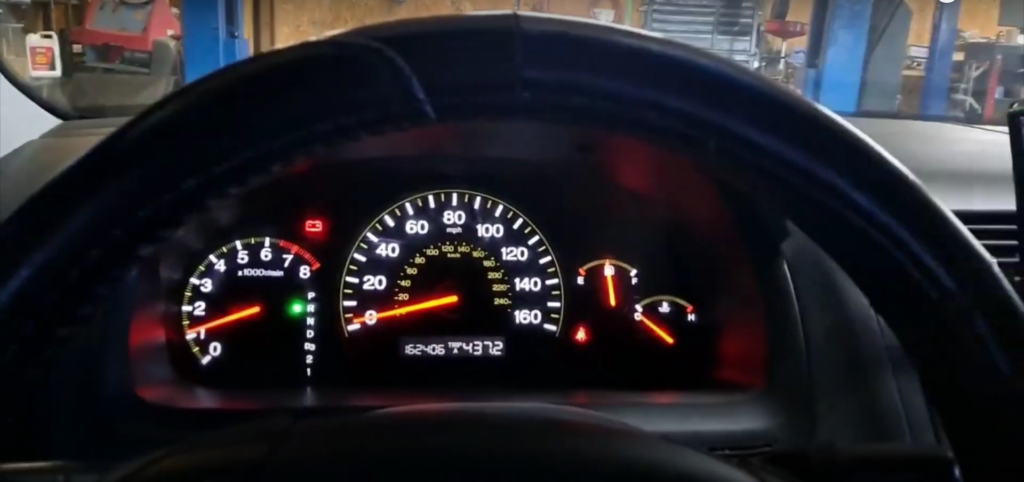
some times if your alternator overcharges the battery it can cause your dashboard warning lights to come on and off.
the gauge at the dash will go up and down when you are driving which means your alternator is not working properly.
The sound of your engine may also change as the alternator starts to fail. You might notice a loud, whining, or grinding noise coming from under the hood. If you do hear such noises, stop driving right away and have it checked.
shorted alternator
will drain your battery in less than one minute and the alternator cable will be hot to the touch, burning smell, or have smoke coming from the alternator.
testing the alternator with a voltmeter
First, you need to set your voltmeter to DCV (DC Volts) above 20 volt
Next, ensure the positive and negative terminals of the battery are free from any debris or dirt.
Then, attach the negative lead of the multimeter to the negative terminal and the positive lead to the positive terminal.
Once properly connected, with the engine running with all electrical accessories on you’ll be able to read the voltage of your alternator. An ideal alternator reading should be around 13.50 volts DC. if it’s cold weather you will see 14.80 this is normal but is it not always the case, in newer vehicles with smart system charges you can see less than 12.50 voltage at a certain point but you should see the voltage go up.
checking voltage at the alternator
is the most accurate way to check its functioning.
connect your multimeter to the alternator output cable using its positive terminal for the red cable and negative for the black to-ground or chassis this is the output voltage from the alternator to the battery.
Start up your engine and read the voltage, it should be above 13.50 volts DC.
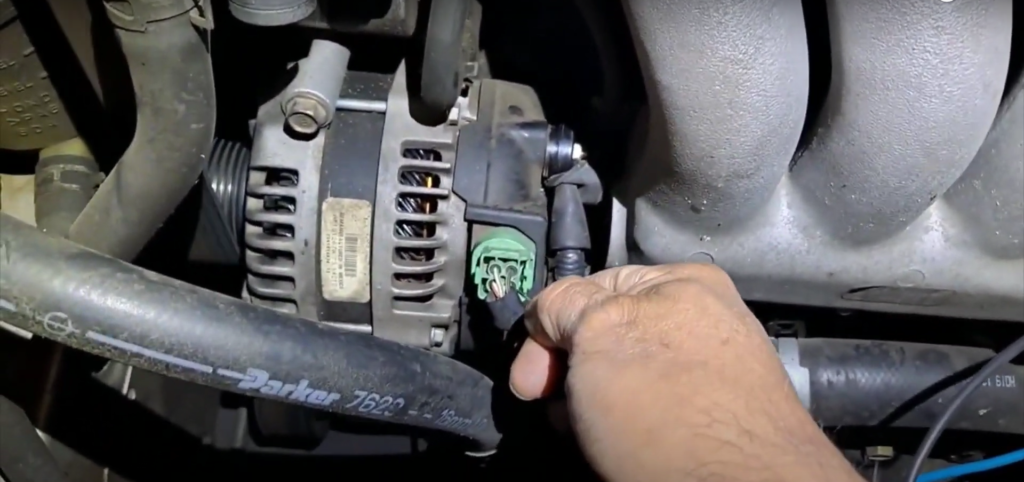
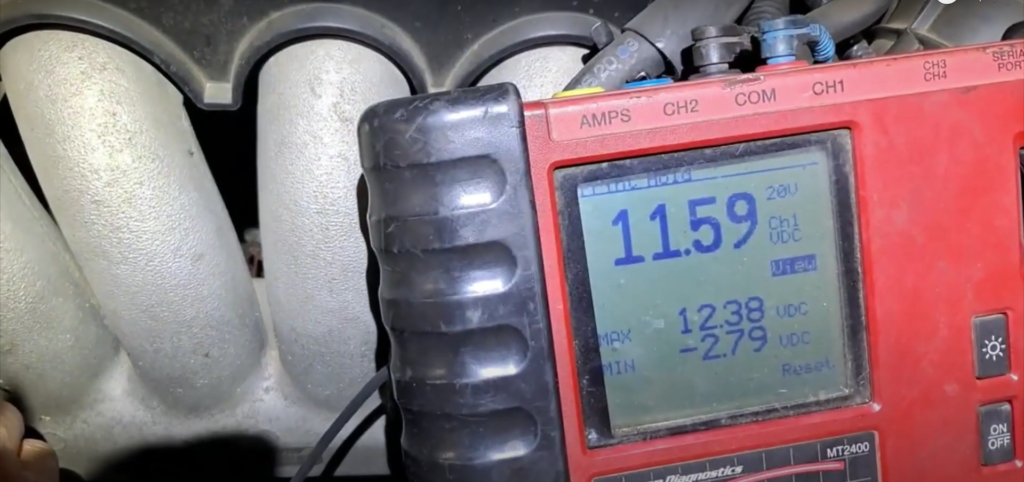
If you’re reading less than 12.6 volts, it’s a sign that your alternator is not producing enough voltage to keep the electrical system’s demand.
move to the connector
An alternator connector normally will have two or four cables that are the input voltage. some you will read 12 voltage or less this should be the same as the battery, but also can be between three voltages to eight voltages if the cables come from the ECM. Different model car systems are different.

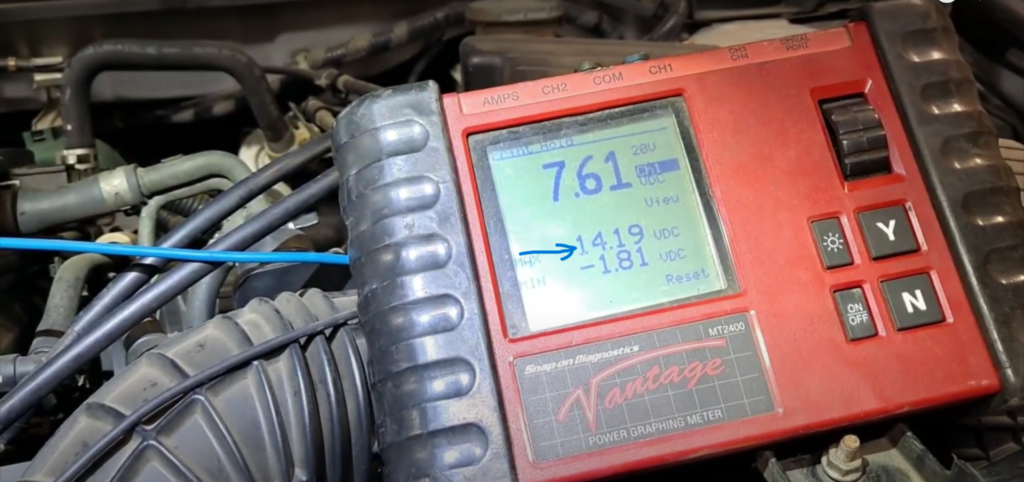
reading and understanding results
When taking a reading, it is important to understand what the results mean. A good reading should be between 13.50 volts DC and 14.60 volts DC when cold. If you receive a voltage lower than 12.6 volts DC, then your alternator may need further inspection or repair. It is also important to keep in mind that modern cars may have a smart system charges so the voltage can go lower than 12.6 volts at certain points, but should be higher overall. If you are unsure about your readings or require further assistance, it is always best to consult with a professional mechanic.
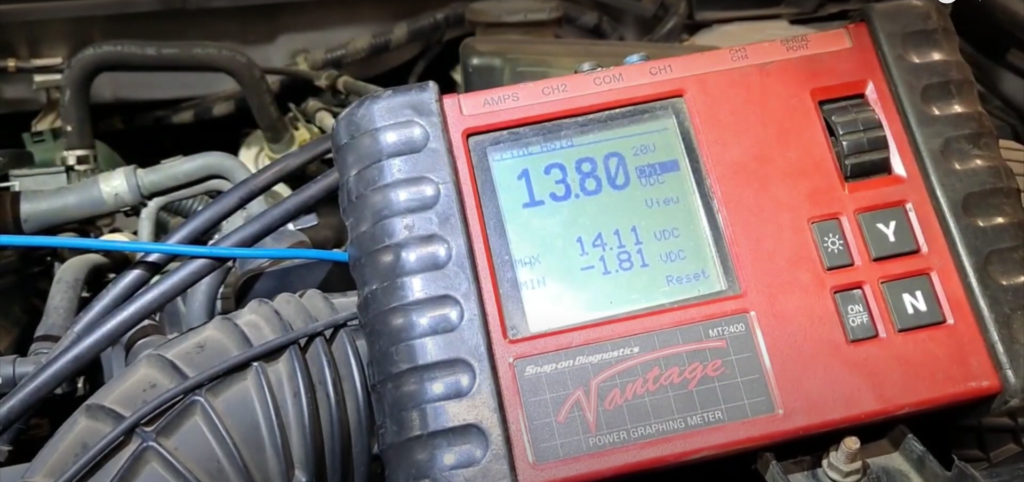
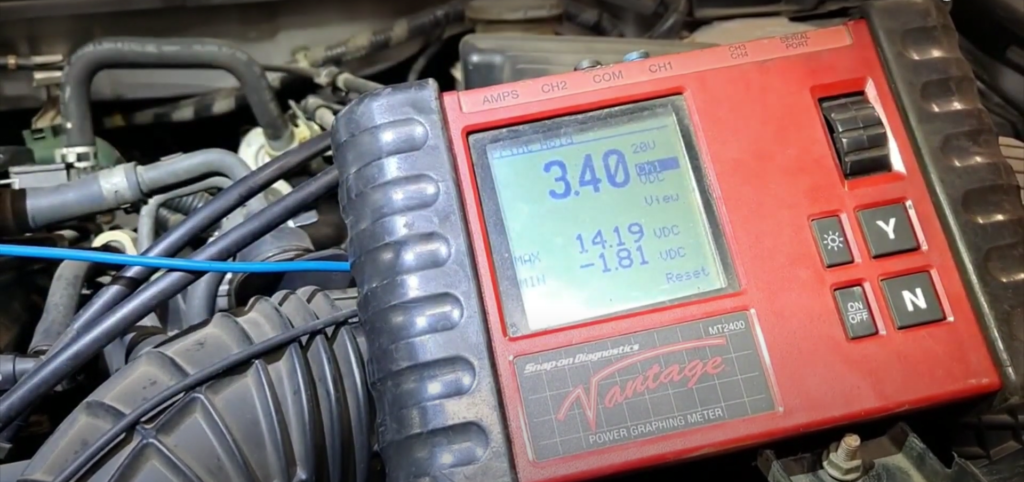
Benefits of Regular Testing
Regularly testing the alternator can help to ensure that your car’s electricals are running in peak condition, reducing the risk of any unexpected breakdowns. It also allows you to detect and fix any small problems before they grow into larger, more expensive ones. By conducting regular tests and evaluating the results, you will be able to keep your car running in tip-top condition.
Happy driving!
safety consideration
Whilst it is possible to test the alternator using a multimeter, you must take all necessary safety precautions. Before beginning, make sure that the car is in the park and its handbrake is applied. Additionally, ensure that your hands are dry, and wear gloves and safety glasses if necessary.
Finally, always ensure that the multimeter is in good working order and double-check all connections before taking any readings.
Following these simple safety rules allows you to test your alternator safely and confidently.
how long can I drive the battery light on
Without the voltage generated by a good alternator, the battery won’t be able to put up with all the heavy loads placed upon it. You will usually only be able to drive between 25 and 30 minutes before needing to have a repair if the battery is fully charged; however, if your battery is not in excellent condition and well-maintained, it is likely you will experience voltage drop much sooner.